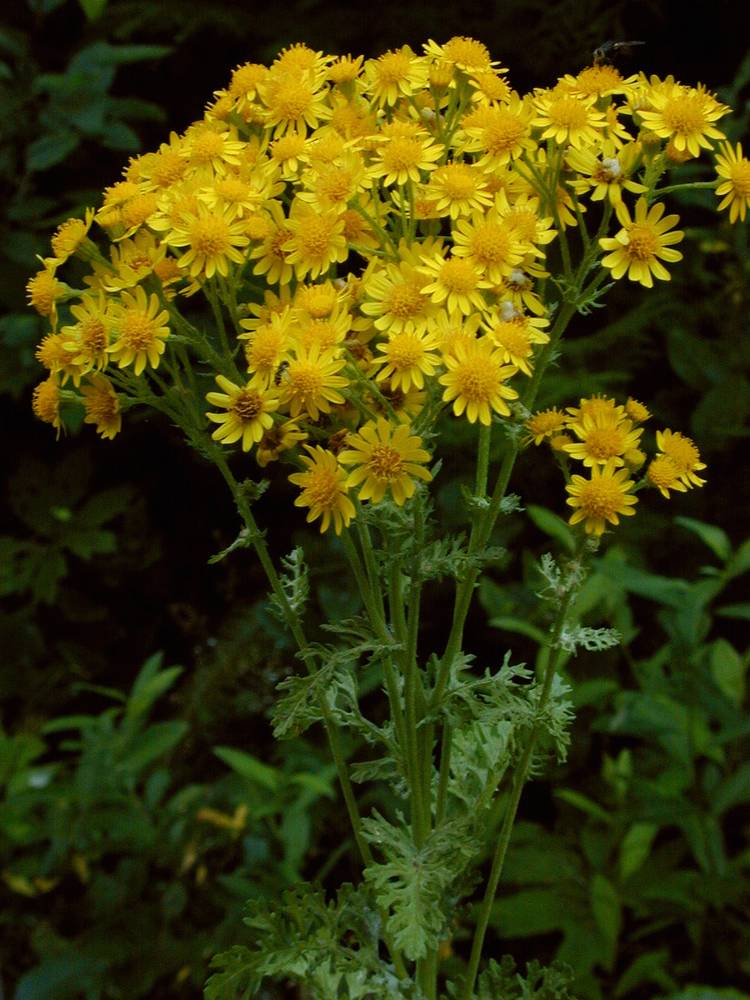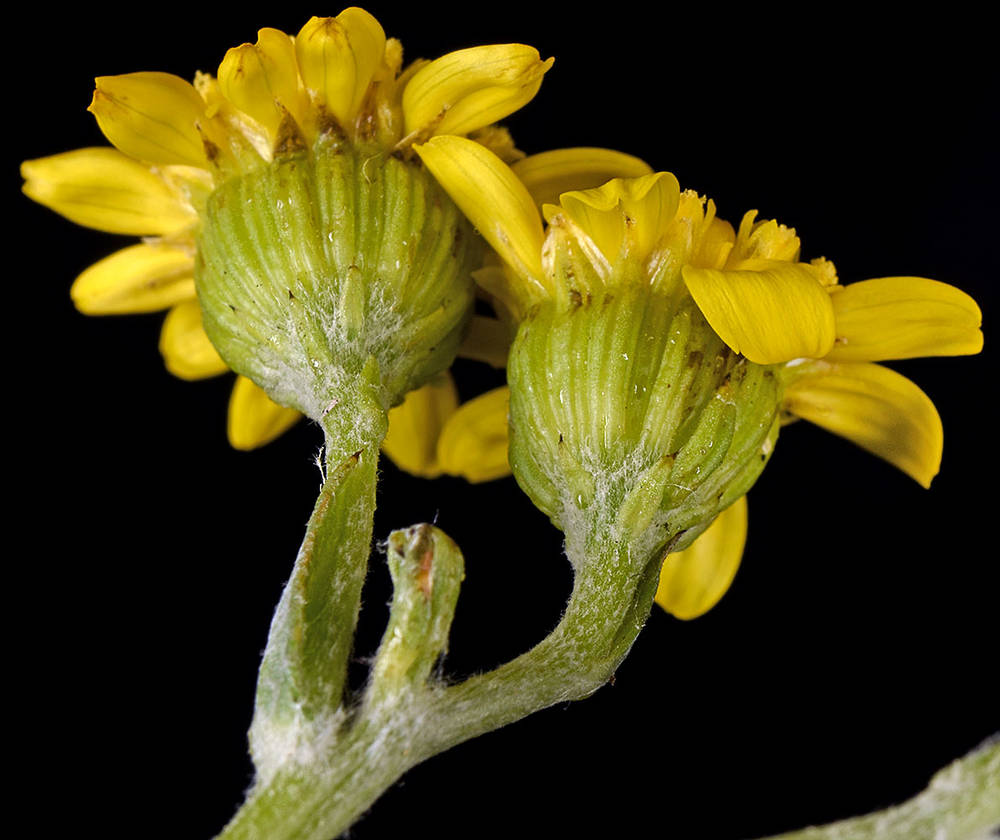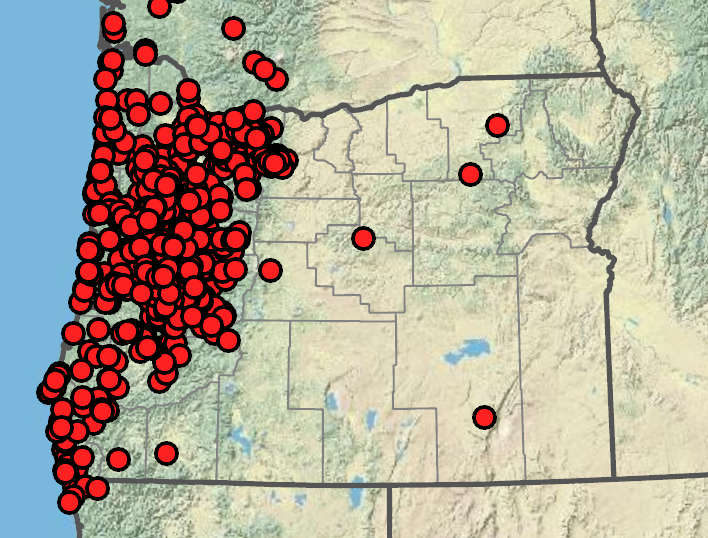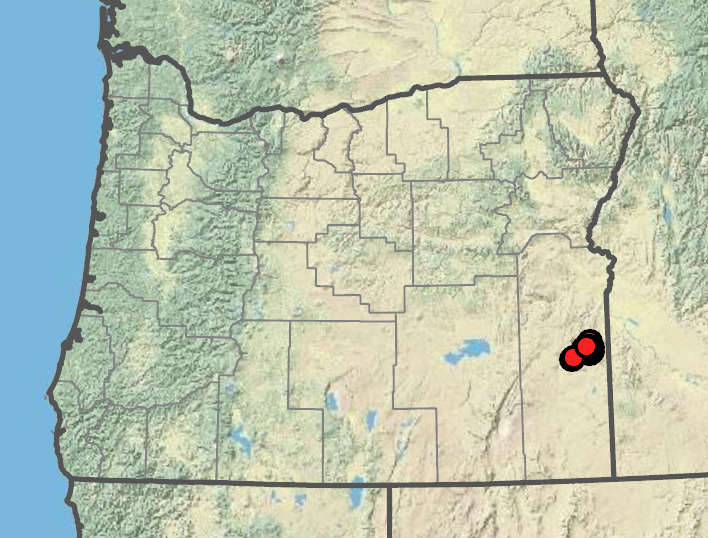Senecio jacobaea
Senecio ertterae
stinking willie, tansy ragwort
Ertter's groundsel
1, or rarely 2–4 and loosely clustered, often purple-tinged, sparsely and unevenly tomentose.
usually 1, rarely clustered, subsucculent, unevenly tomentose to glabrate.
basal usually withering before flowering;
cauline ± evenly distributed along stems;
distal slightly smaller; ovate to broadly ovate, bases tapered, usually 1–3-pinnate, ultimate margins dentate;
lobes obovate to spatulate, petiolate.
basal withering early;
cauline oblanceolate to spatulate, bases tapering;
margins deeply incised;
petioles winged;
distal sessile and bract-like, progressively reduced.
compound corymb-like arrays;
bracts conspicuous but small.
cyme-like arrays;
bracts 0 or few and inconspicuous.
widely cylindric or urn-shaped.
widely cylindric.
~13;
rays 8–12 mm.
8, rarely 13;
rays 5–6 mm.
60–70+.
45–55.
13, 3–4(5);
tips black or dark green.
usually 13, 6–7 mm;
tips green;
surfaces densely floccose-tomentose.
2–6 bractlets, inconspicuous, usually < 2 mm.
1–5+ linear bractlets; to 2 mm.
0.75–1.3 mm, sparsely hairy or glabrous.
2–3 mm, usually hairy along the ribs, sometimes glabrous.
(10)20–60+.
6–10(20).
=40.
=40.
Senecio jacobaea
Senecio ertterae
Disturbed areas, pastures, roadsides. Flowering May–Sep. 0–1600 m. Casc, CR, Est, Sisk, WV. CA, ID, WA; north to British Columbia, northeast to MT, northeastern North America; Europe. Exotic.
Senecio jacobea is an introduced weed, originally from Europe. It establishes in places with cool, wet summers and is particularly toxic to livestock. In most states where it occurs, this species has been declared a noxious weed.
Talus slopes, volcanic tuff. Flowering May–Sep. 800–1400 m. Owy. Native. Endemic to Oregon.
This species was not recognized until the late 1970s. It is a very rare endemic found only in Malheur County. It has been added to the Center for Plant Conservation’s National Collection of Endangered Plants.
Debra Trock
Debra Trock
- Local floras:
BC,
CA,
OR,
WA
- Local Web sites:
CalFlora,
CalPhotos,
Flora NW,
PNW Herbaria,
Turner Photog.
WildflowerSearch
iNaturalist (observations)
USDA Plants Database
- LBJ Wildflower Center
- SEINet
- Plants of the World Online
- Encyclopedia of Life
- Wikipedia
- Google Image Search





